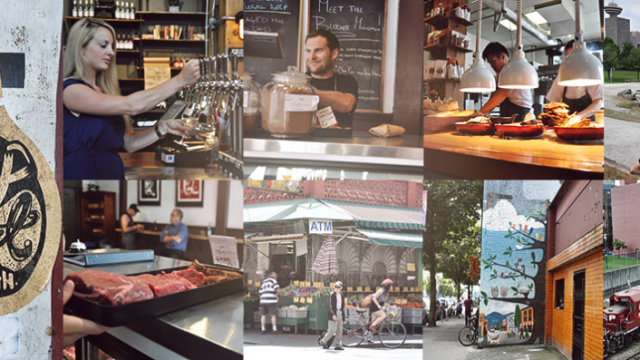Instagram’s not social media, but these three apps are | The Social Brief

Instagram isn’t a social channel, and that means that a major shift is about to happen.
It may be one of my most-used apps, as I scroll through my feed multiple times per day, searching for gems to double-tap, but it lacks the community and shareablilty that defines a true social channel.
The reason that social media is the most important change in communications since the telephone is because it democratizes the spread of content. We see is what we’ve opted in to see, or what our friends have liked so much that they literally couldn’t, until they actually shared it with us.
That may seem obvious to us now, but before the days of social the only way that we received news and messages was through a few channels that were really tough (or expensive) to enter, ie. Newspapers, TV and Radio. Kickstarter, Dollar Shave Club and Movember never would have been possible without social media. And all of those things relied heavily on one thing: If the content is good enough, people will share it with each other and talk about it.
At its core, that’s not what Instagram is about, and that’s why we’re about to see the shift.
Instagram is where we show each other neatly arranged photos, and selfies in beautiful settings. It’s not where ideas spread (TED: YouTube) and movements begin (Arab Spring: Twitter), and we’re hungry for a place for those things to happen again.
Am I predicting the fall of the mighty Insta? Absolutely not. I’m optimistic about its future in video and storytelling, but the fall of message boards, blog commenting and Twitter we have left a void that’s just not being satisfied right now.
So who’s going to step up? Lots of apps. And it’s already happening.

The trends go where the budgets are being spent, so I thought that I’d use this week’s Social Brief to break down the three brand channels that are quickly filling the social gap, and you should definitely be aware of.

One of the largest messaging apps in the world, WhatsApp has over 1 Billion monthly active users and recently, brands have been jumping on board. There is no feature where you can push posts out to the general public, so brands are forced to create accounts that serve a legitimately valuable purpose, and then convince people to add them there so that they can voluntarily receive their messages.
The uses so far have ranged from customer service to parodies of cult favourite characters, but maybe the most useful example is Mayonnaise.
How the Hellman’s could a mayo company convince people to add their brand’s account on WhatsApp?
Simple, by doing the thing that all brands had to do before Instagram: Be genuinely useful.
Hellman’s Mayo invited a series of celebrity chefs to give private lessons over WhatsApp on how to make signature dishes (all of which just happened to include mayo), and ran messaging across all of their other channels, prompting people to submit their phone numbers to receive the free, valuable content. The content series ended with a promo for a free jar of the stuff. The result was a captivated audience of home cooks who were captivated and appreciative of Hellman’s for the useful content that they had just received.
For more info, check out the full case study here.
Viber

Originally, Viber was launched as a cheap way to communicate internationally. It can be used like a Walkie Talkie for group chats, or to make regular calls that rely on an internet connection rather than a phone line.
They could see the shift coming, and saw it as an opportunity to bring brands in who would eventually become their advertising customers.
In order to do that, they released a feature called Public Chat, where anyone can discover, follow and become a part of text-based conversations. They look a lot like the world’s largest group text-messaging-chat, but also integrate links, images and GIFs.
Brands like Buzzfeed jumped on the opportunity to create chats, but they knew that not many people would have enough to say about a single brand to build and sustain a whole public chat, so instead they’ve been created around topics. The topics range from Breaking News, to the Kardashians and Sports, and of course the Buzzfeed content is always at the forefront, but they have no control over the conversation – if it happens to veer negative, or shift to a different publisher’s content, there’s nothing they can do about it.
That’s the beauty of democratic social: The results of the media is only as great as the quality of what’s shared and how it’s shared.
Check out the Buzzfeed article about themselves here.
Kik

Another chat app with, what seems to be, an infinite number of users. As we speak, they’re probably crossing 300 million and counting, and are most often used on campuses to connect groups of friends to make plans, organize parties and share content with each other.
Again, brands saw the opportunity, but knew that they couldn’t just launch a channel and expect people to flock. Instead, they’re creating the types of ridiculous content that college kids love, and building communities around things like games and bacon, rather than logos.
When Burger King wanted to launch their spiciest product yet: fiery chicken fries, they knew that the 19-25 year old group was a key demo, so they created a campaign called Offensively Spicy.
BK used Kik’s sticker feature to allow people to either show off their chicken fry bravery, or challenge their friends. The community is still active and growing right now.
Find Burger King on Kik here.
So What?
Not many of us can afford the price tags that it takes to be one of the first brands to advertise on a new channel, but we can start thinking about what kind of community we can create that will legitimately be valuable and useful to people.
If your brand is about adventure and lifestyle, what about a place where people can share little known back country hikes and cross country skiing trails? You can hook the best up with your product, and invite groups along for a rip where you hook them up with transportation and gear.
Your organization is about helping businesses succeed? Create a support group for stressed out executives to share experiences and opportunities with each other, then participate genuinely in the conversation.
The best part is that the first question that we’re going to have to answer when it comes to social media will no longer be “how can we get more likes?” Instead it will be “how can we be useful to our community?” and if that’s the direction that all brand communication ends up going, then we all win.
Thanks for reading The Social Brief. I also send these out by email every Monday, so if you want to be sure to get the latest in social, and my rants on what’s happening, sign up below.


